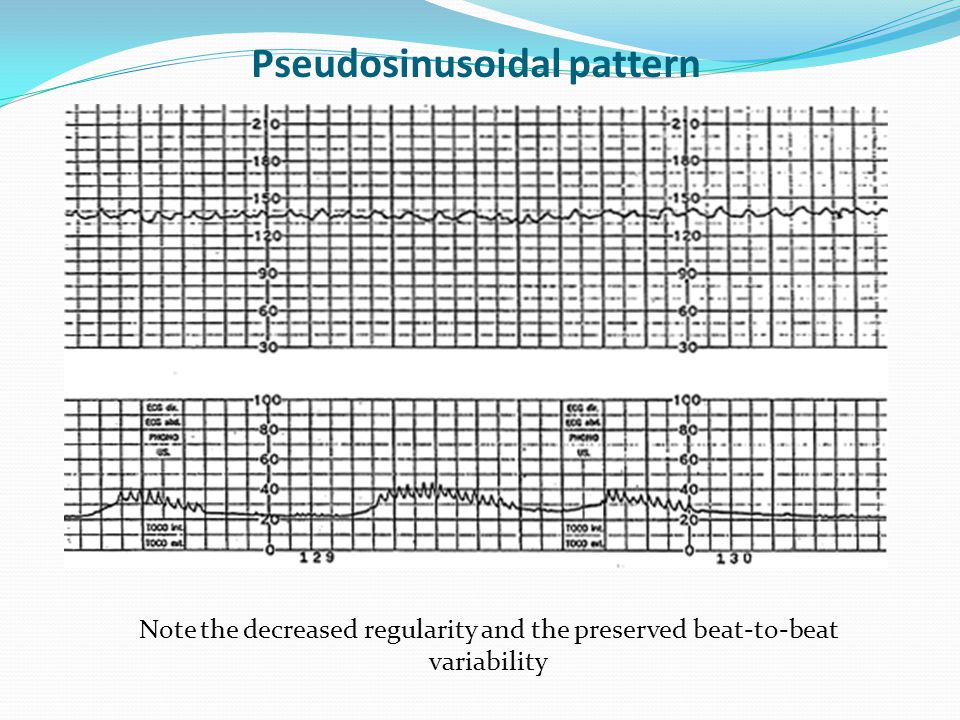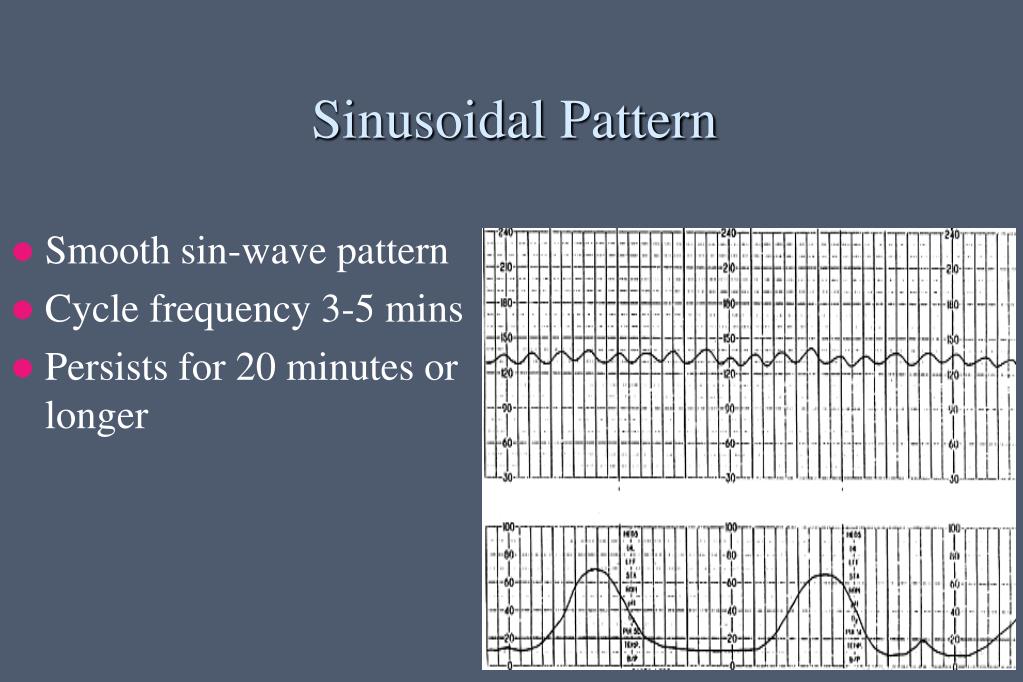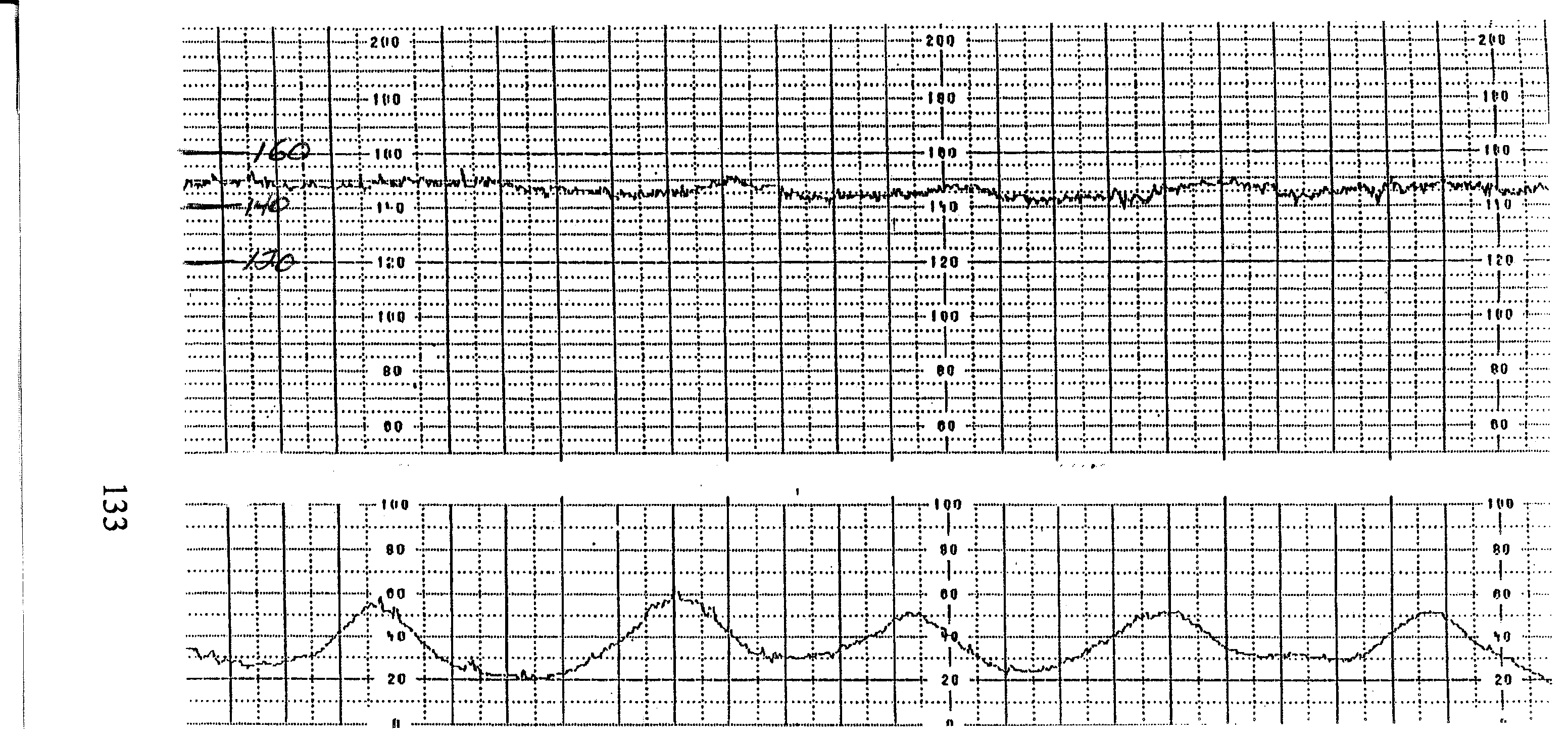Fhr Sinusoidal Pattern
Fhr Sinusoidal Pattern - Reports on fluctuating fetal heart rate (fhr) patterns, which have been called sinusoidal fhr patterns in the literature, have been critically. A regular, smooth, undulating signal, resembling a sine wave, with an amplitude of 5−15 bpm, and a frequency of 3−5 cycles per. In 1972, manseau et al. Described an undulating wave form alternating with a flat or smooth baseline fetal. On the basis of this definition, 27 tracings were classified as true shr patterns and all were associated with significant fetal or neonatal. The fetal heart rate (fhr) pattern helps to distinguish the former from the latter as it is an indirect marker of fetal cardiac and central.
A regular, smooth, undulating signal, resembling a sine wave, with an amplitude of 5−15 bpm, and a frequency of 3−5 cycles per. In 1972, manseau et al. The fetal heart rate (fhr) pattern helps to distinguish the former from the latter as it is an indirect marker of fetal cardiac and central. Reports on fluctuating fetal heart rate (fhr) patterns, which have been called sinusoidal fhr patterns in the literature, have been critically. On the basis of this definition, 27 tracings were classified as true shr patterns and all were associated with significant fetal or neonatal. Described an undulating wave form alternating with a flat or smooth baseline fetal.
The fetal heart rate (fhr) pattern helps to distinguish the former from the latter as it is an indirect marker of fetal cardiac and central. Reports on fluctuating fetal heart rate (fhr) patterns, which have been called sinusoidal fhr patterns in the literature, have been critically. On the basis of this definition, 27 tracings were classified as true shr patterns and all were associated with significant fetal or neonatal. Described an undulating wave form alternating with a flat or smooth baseline fetal. In 1972, manseau et al. A regular, smooth, undulating signal, resembling a sine wave, with an amplitude of 5−15 bpm, and a frequency of 3−5 cycles per.
Sinusoidal fetal heart rate
Described an undulating wave form alternating with a flat or smooth baseline fetal. On the basis of this definition, 27 tracings were classified as true shr patterns and all were associated with significant fetal or neonatal. In 1972, manseau et al. A regular, smooth, undulating signal, resembling a sine wave, with an amplitude of 5−15 bpm, and a frequency of.
Sinusoidal fetal heart rate
On the basis of this definition, 27 tracings were classified as true shr patterns and all were associated with significant fetal or neonatal. Reports on fluctuating fetal heart rate (fhr) patterns, which have been called sinusoidal fhr patterns in the literature, have been critically. The fetal heart rate (fhr) pattern helps to distinguish the former from the latter as it.
Sinusoidal fetal heart rate
On the basis of this definition, 27 tracings were classified as true shr patterns and all were associated with significant fetal or neonatal. The fetal heart rate (fhr) pattern helps to distinguish the former from the latter as it is an indirect marker of fetal cardiac and central. Described an undulating wave form alternating with a flat or smooth baseline.
characteristics of a sinusoidal pattern highlighted on the caseCTG
On the basis of this definition, 27 tracings were classified as true shr patterns and all were associated with significant fetal or neonatal. A regular, smooth, undulating signal, resembling a sine wave, with an amplitude of 5−15 bpm, and a frequency of 3−5 cycles per. The fetal heart rate (fhr) pattern helps to distinguish the former from the latter as.
An example of FHR deceleration is shown by aperture of FHR curve, where
A regular, smooth, undulating signal, resembling a sine wave, with an amplitude of 5−15 bpm, and a frequency of 3−5 cycles per. Reports on fluctuating fetal heart rate (fhr) patterns, which have been called sinusoidal fhr patterns in the literature, have been critically. Described an undulating wave form alternating with a flat or smooth baseline fetal. On the basis of.
Fhr threadsdiy
Reports on fluctuating fetal heart rate (fhr) patterns, which have been called sinusoidal fhr patterns in the literature, have been critically. In 1972, manseau et al. The fetal heart rate (fhr) pattern helps to distinguish the former from the latter as it is an indirect marker of fetal cardiac and central. A regular, smooth, undulating signal, resembling a sine wave,.
Sinusoidal Fhr Pattern
A regular, smooth, undulating signal, resembling a sine wave, with an amplitude of 5−15 bpm, and a frequency of 3−5 cycles per. In 1972, manseau et al. Described an undulating wave form alternating with a flat or smooth baseline fetal. The fetal heart rate (fhr) pattern helps to distinguish the former from the latter as it is an indirect marker.
What Is A Sinusoidal Pattern
A regular, smooth, undulating signal, resembling a sine wave, with an amplitude of 5−15 bpm, and a frequency of 3−5 cycles per. Described an undulating wave form alternating with a flat or smooth baseline fetal. On the basis of this definition, 27 tracings were classified as true shr patterns and all were associated with significant fetal or neonatal. The fetal.
Sinusoidal fetal heart rate
The fetal heart rate (fhr) pattern helps to distinguish the former from the latter as it is an indirect marker of fetal cardiac and central. A regular, smooth, undulating signal, resembling a sine wave, with an amplitude of 5−15 bpm, and a frequency of 3−5 cycles per. Described an undulating wave form alternating with a flat or smooth baseline fetal..
Sinusoidal fetal heart rate
A regular, smooth, undulating signal, resembling a sine wave, with an amplitude of 5−15 bpm, and a frequency of 3−5 cycles per. Reports on fluctuating fetal heart rate (fhr) patterns, which have been called sinusoidal fhr patterns in the literature, have been critically. On the basis of this definition, 27 tracings were classified as true shr patterns and all were.
Described An Undulating Wave Form Alternating With A Flat Or Smooth Baseline Fetal.
On the basis of this definition, 27 tracings were classified as true shr patterns and all were associated with significant fetal or neonatal. A regular, smooth, undulating signal, resembling a sine wave, with an amplitude of 5−15 bpm, and a frequency of 3−5 cycles per. The fetal heart rate (fhr) pattern helps to distinguish the former from the latter as it is an indirect marker of fetal cardiac and central. In 1972, manseau et al.









